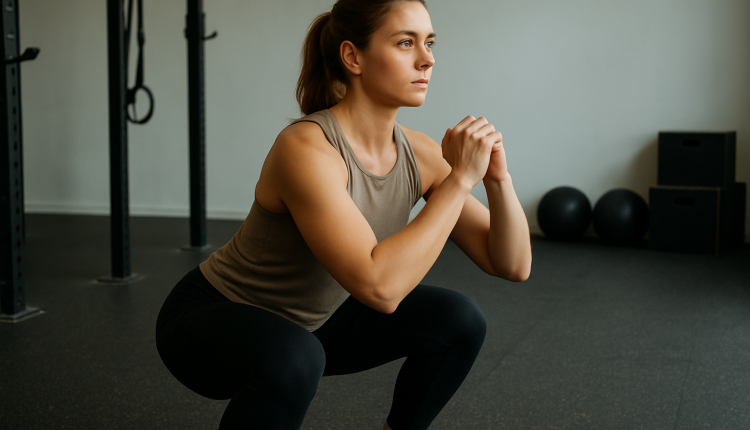In the modern pursuit of health and wellness, the concept of “functional fitness” has rapidly gained traction. While traditional workout routines often focus on isolated muscle groups or aesthetic goals, functional fitness emphasizes movements that mirror daily activities and improve overall strength, coordination, balance, and flexibility. This training approach is not just a trend—it’s a philosophy that reshapes the way we think about fitness, particularly as we aim to stay active and injury-free throughout our lives.
What Is Functional Fitness?
Functional fitness refers to exercises that train your muscles to work together and prepare them for daily tasks by simulating common movements you might do at home, at work, or in sports. This includes bending, lifting, reaching, twisting, pushing, and pulling. Rather than working a single muscle in isolation, functional training involves multiple joints and muscles, often engaging the core and emphasizing stability.
For example, a squat is a functional movement because it mimics the action of sitting down or lifting something from the ground. A lunge resembles the motion of walking or climbing stairs. These are not just gym exercises—they are foundational human movements.
The Benefits of Functional Training
- Improved Daily Performance
The most immediate benefit of functional fitness is its application in everyday life. Whether you’re lifting grocery bags, playing with your kids, gardening, or getting up from a chair, functional training prepares your body for real-world challenges. This type of training enhances mobility, coordination, and balance, making these tasks easier and reducing the likelihood of injury. - Enhanced Muscle Balance and Posture
Functional exercises often correct imbalances in the body by engaging both primary and stabilizing muscles. This results in improved posture, reduced back pain, and more symmetrical muscle development. By moving in multiple planes of motion, you train your body to support itself better throughout a wide range of movements. - Injury Prevention
Many injuries stem from poor movement patterns or muscle imbalances. Functional fitness helps retrain the body to move correctly and efficiently. By focusing on movement quality, not just quantity or weight, functional fitness builds resilience and decreases the chance of strains or overuse injuries. - Core Stability and Strength
Core strength is vital to almost every functional movement. Functional workouts heavily incorporate core engagement, even when not specifically targeting the abdominals. A strong core improves balance, supports the spine, and enhances athletic performance. - Accessibility and Versatility
Functional training doesn’t require expensive gym equipment. Many exercises use body weight or minimal gear like kettlebells, resistance bands, and medicine balls. This makes it an inclusive approach, suitable for beginners, seniors, and athletes alike.
Core Elements of Functional Training
To get the most out of a functional fitness routine, it’s essential to include a variety of movement patterns and focus on the following elements:
- Multi-Planar Movements: Move forward and backward (sagittal), side to side (frontal), and rotationally (transverse).
- Compound Exercises: Exercises that involve multiple joints and muscle groups, such as deadlifts, squats, and push-ups.
- Balance and Coordination Drills: Standing on one leg, stability ball work, or exercises on an unstable surface.
- Flexibility and Mobility Training: Dynamic stretching, yoga flows, and mobility drills to enhance range of motion and joint health.
- Functional Cardio: Movements like rowing, stair climbing, or circuit-based training that elevate the heart rate while mimicking real-life actions.
Sample Functional Workout Routine
Warm-Up (5-10 minutes)
- Arm circles
- Leg swings
- Cat-cow stretch
- Bodyweight squats
Main Circuit (Repeat 3 times)
- Squats with Overhead Reach (15 reps)
- Walking Lunges with a Twist (10 each side)
- Push-Ups (Knee or Full – 12 reps)
- Plank with Shoulder Taps (30 seconds)
- Kettlebell Deadlifts (12 reps)
- Step-Ups on a Bench or Sturdy Chair (10 each leg)
Cool Down (5 minutes)
- Seated hamstring stretch
- Standing quad stretch
- Child’s pose
- Deep breathing exercises
This simple yet effective workout touches on key principles of functional fitness. Over time, you can add resistance, modify exercises, or extend duration based on your progress and goals.
Functional Fitness Across Life Stages
Functional training is not just for the young and athletic. Its benefits are perhaps most evident in aging populations or those recovering from injuries.
- Young Adults & Athletes: Enhances sports performance, increases agility, and builds a solid foundation of strength.
- Middle Age: Helps counteract sedentary habits and promotes healthy movement patterns as the body begins to experience natural declines in flexibility and strength.
- Older Adults: Supports independence, reduces fall risk, and improves quality of life through maintained mobility and balance.
Integrating Functional Fitness into Your Lifestyle
You don’t need to overhaul your entire workout routine to embrace functional fitness. Small adjustments can make a big impact:
- Swap out machines for free weights or bodyweight exercises.
- Focus on movement quality rather than lifting heavier.
- Add balance drills or flexibility work into your routine.
- Choose exercises that mimic the demands of your lifestyle or job.
If you’re not sure where to start, working with a personal trainer or physical therapist experienced in functional fitness can provide tailored guidance and help you build a safe, progressive program.
Conclusion
Functional fitness is more than a workout style—it’s a strategy for lifelong health. By training your body in ways that improve real-world movement, you become stronger, more mobile, and better equipped to handle the physical demands of daily life. Whether you’re chasing kids around the yard, carrying groceries up stairs, or just aiming to avoid injury, functional training offers a smart, sustainable path to fitness that supports you well beyond the gym.


